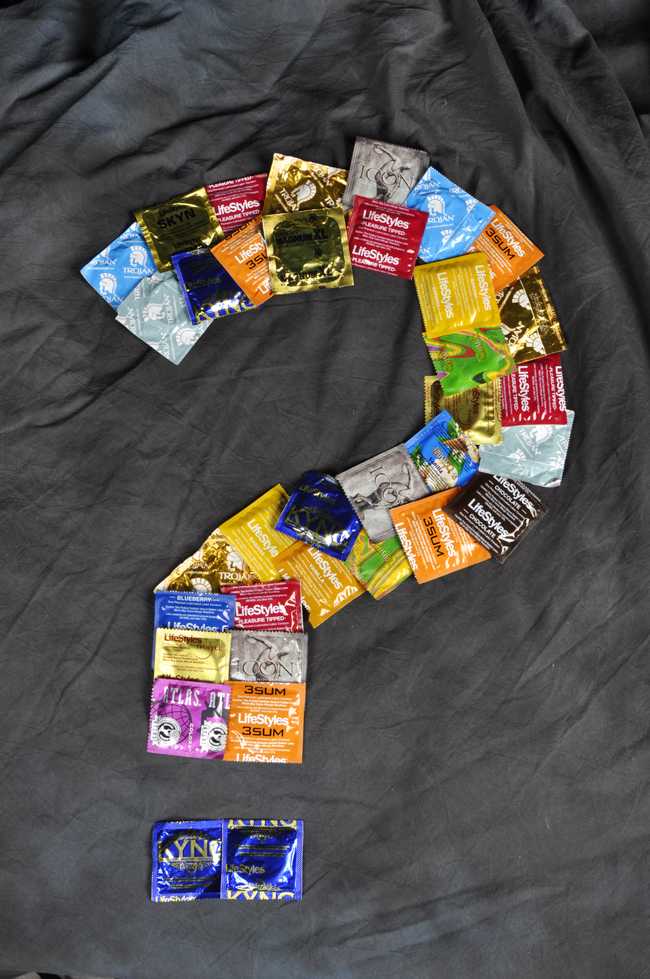
Sex: the golden word that is on every college student’s mind. While it is a natural part of life, sex does come with consequences.
Forty-six percent of high school students ages 12 to 17 in the United States have had sexual intercourse, according to a study by the Official Journal of the American Academy of Pediatrics (OJAAP).
With great sex comes great responsibility. The purpose of using a condom is to prevent unwanted pregnancies and sexually transmitted diseases (STD).
But even with these facts, some students are still not practicing safe sex.
“I think people aren’t being safe because they’re lazy,” said Brandon Singer, marriage and family therapy first-year masters program. “The education is seen as more of an old school kind of thing, and that kids just don’t care.”
The Centers for Disease Control and Prevention (CDC) said that nearly half of the 20 million new STDs diagnosed each year are among young people aged 15 to 24.
In a given year, one in four sexually active teens in the US are diagnosed with an STD, while unplanned pregnancies are at the top of the list in industrialized countries. These numbers increase as the sexual activity begins earlier, according to the OJAAP.
“I think people aren’t being safe because they don’t have the adequate resources,” said Leslie Rios, senior psychology major. “They don’t want to (wear a condom), or they think they can do alternative methods in order to not get pregnant, or they think they’re invincible to STDs, which is not true.”
A recent study released by The Sex Information and Education Council of Canada (SIECCAN) found that nearly 51 percent of sexually active college students aren’t even using condoms. The study was conducted by Leger Marketing and commissioned by the Trojan Condom Brand with a mission of understanding the sexual health of college students.
“I think that people generally tend to do a risk-versus-benefit assessment of the moment,” said Scott Brantner, graduate student in history. “Usually, that moment is not the best moment to make logical decisions.”
While classes are taught in middle school and high school on sex education, studies show there are other factors that can contribute to the unsafe sexual practices of college students.
Watching sex on television causes adolescent initiation of sexual behavior, according to the study by OJAAP.
The American Academy of Pediatrics cited television as a key factor in what is shaping this generation’s societal norms about intercourse. The study indicated that adolescents who viewed more sexual content were more likely to initiate intercourse and progress to more advanced foreplay during the subsequent year.
While it seems there are students who are not taking the appropriate precautions, there are still those who take the extra step to prevent STDs and unwanted pregnancies.
“Generally, most college students are much more concerned about being prepared,” said James E. Elias, professor of sociology. “I think we’re seeing a major change in that. I think it depends on how the campus health departments promotes it to the students. In other words, accessibility to condoms.”
On campus, the Klotz Health Center provides students with free condoms. The center provides free contraception, offer birth control, emergency contraception and STD testing.

Although CSUN is open to providing the necessary precautions to students, some universities do not take the same stance.
Last year, Boston College was instructed to stop giving out free condoms on campus to students. The university, a Jesuit Catholic institution, cited that these practices were not in agreement with their private religious beliefs and went as far as threatening disciplinary action.
Out of 1,500 university students surveyed, 88 percent said their sexual health is a large part of their overall well-being, while 74 percent scored a five out of ten or worse on a general sexual health quiz, according to a survey conducted by the SIECCAN.
The SIECCAN study discusses how seriously sexual education is being taken by young people.
Elias believes if the proper methods are being promoted and distributed on campus, students can be better prepared for a healthier sex life.
“If they have accessibility, then they are going to be better prepared,” Elias said. “Many of the students, if not most of the students, have a better knowledge and background and know how to prevent STDs or pregnancy.”
Contributing reporting by James Waters